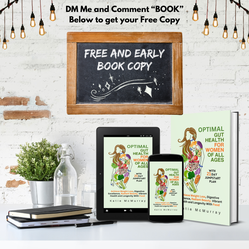I love books and I especially love books about my crafts. I've picked out a few that I think are the best on the subject of sheep and fiber arts. You will find some are reference books and some, books to curl up with. I've included a book on a woman's life on a sheep farm, and some history of cloth production and the place of women in ancient society.
If you want a good read or are thinking of leaning spinning or weaving, here's a book for you.

Five of the Best Books for Fiber Arts
by Ragtimelil
These are the top five books that I've read on the subject of sheep, spinning, and weaving. I would recommend these for yourself or a gift for a friend.
The Fleece and Fiber Sourcebook
Carol Ekarius and Deborah Robson
This book has to be the most comprehensive book available today on the subject of fiber animals and fiber. The photographs are gorgeous and there are descriptions of almost every breed of sheep in the world. Along with the wonderful pictures of the animals, are detailed descriptions, photographs of the fiber and what it is best used for. Some even show samples of the yarns knitted and woven.
It’s not just a reference book though. There are lively descriptions of individuals such as Shrek, the Merino sheep in New Zealand who evaded the shearers for six years. When finally caught, his fleece weighed 60 pounds.
The world’s smallest sheep, the ouessant, will capture your imagination. They are smaller than some breeds of dogs.
This is a book that can be enjoyed on many different levels for many years.
Women's Work, the First 20,000 Years
Elizabeth Wayland Barber
I’ve always had an interest in archeology and especially the daily lives of people who lived in ancient times. This book describes the production of cloth and clothing and the changing role of women in producing them.
Barber begins her book describing the Paleolithic "Venus figure" carved wearing a string skirt and goes on to describe the creation and significance of the garment. She traces the evolution of textiles, spinning and weaving.
Barber uses a light, conversational tone in the book without assuming that the reader is an expert in spinning and weaving. Still, she is scholarly in her approach She bases her facts on archaeology, geology, art, and ancient texts.
Sheepish - Two Women, Fifty Sheep and Enough Wool to Save the Planet
Catherine Friend
I had trouble putting this book down. The author was funny and fascinating with tales from a sheep farm and a reluctant shepherd. My dogs were frequently jolted out of a good nap by my outburst of laughter as I read the saga of farm life in a northern part of the United States.
Friend never really wanted to farm but was led astray by her partner. Now, after 15 years, she’s tired and wants to give it up. She realizes, however, that sheep and small farms are perhaps too important to give up.
I had to read Friend’s previous books “Hit by a Farm” and “The Compassionate Carnivore.” They were every bit as good as "Sheepish."
The Weaver's Idea Book: Creative Cloth on a Rigid Heddle Loom
Jane Patrick
This book was a revelation for me. Rigid heddle weaving is basic weaving - simple over and under weaving. In this book, Patrick explains in clear detail and with excellent photographs, how to produce unique cloth with only a rigid heddle loom.
I was particularly drawn to the use of pick up sticks. Although I have a four harness loom, I found the idea of creating these interesting fabrics on a simpler loom fascinating. Pick up sticks have been used for generations as a method of making designs in fabric. It’s no surprise that it can be used to design the overall fabric as well.
Many of the patterns have a draft for a four harness loom included. This is a great source book for any weaver whether a beginner or more experienced
Respect the Spindle
Abby Franquemont
Since I have a perfectly nice spinning wheel, I tend to forget about my spindles. This book by Abby Franquemont has reminded me that the spindle is not just something to learn on before making the big purchase of a wheel.For many generations and cultures, it was the tool of choice.
Franquemont not only explains the differences between top whorl and bottom whorl spindles, but also the difference between a drop spindle and a support spindle and what each can be used for. She gives tips for buying or making your own spindles and ways to use them.
Franquemont learned to spin in the Andes as a child and offers us a unique view of childhood in South America and the value placed on the craft of making cloth.
 |
| Respect the Spindle Only $16.76 |
There are many nice books out there on fiber and fiber arts. I'm recommended these as the best I've read. They would be a welcome addition to almost anyone's bookshelf and a handy reference book for all levels of expertise.
You might also like
How to Get Book Reviews: A Guide to Verified ReviewsTired of writing books that get no reviews? Learn how to get verified reviews.
Rough Sea Justice Book ReviewSuspense book on crime, adventure, murder, justice, sea, sailing, yachting, g...







 How I Found My Free Family History Programon 09/05/2013
How I Found My Free Family History Programon 09/05/2013
 Finding a Graveon 09/01/2013
Finding a Graveon 09/01/2013
 Do Border Collies Make Good Pets?on 08/11/2013
Do Border Collies Make Good Pets?on 08/11/2013
 Hubert Patey - an Indentured Servanton 08/02/2013
Hubert Patey - an Indentured Servanton 08/02/2013



Read Any Good Books Lately?
My current favs...
These look like some pretty good reads. I'm with you. I love to buy books about my crafts.
I do love these books. Just wanted to share.
Not read any good books most recently, been busy getting the kids ready for back to school. But I do appreciate you pointing us in the right direction as to what the best books are for learning about fiber art. Thanks :)K